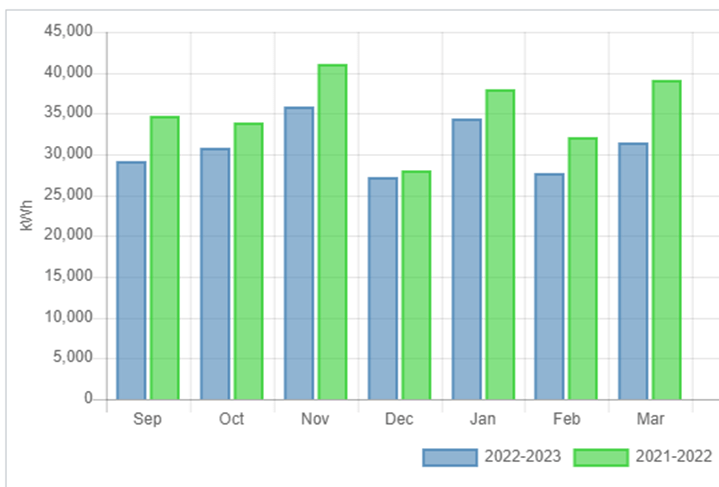King James I Academy
King James I Academy
An energy prices have increased over the past year, conservation has been on the minds of many school managers. Few have done as systematic and strategically targeted a job as King James I Academy in Bishop Auckland. Saving energy is especially challenging for large secondary schools like King James but the school managers have taken a systematic and strategic approach to reducing their usage. The 140 staff and nearly 1000 pupils at the school occupy buildings with a combined footprint of over 9000 m2. Two of the larger buildings are listed, built in 1910, with lovely but energy-inefficient features such as high ceilings, single-pane leaded windows and uninsulated stone walls. The school is open for extended hours as they host community and sporting events in the evenings, weekends and over holidays. Due to the size, age and the intensity of use, this school has struggled with a considerable energy consumption profile and the resulting costs and carbon footprint.
Enter the King James finance officer and site team. Starting early in 2022, with support from OASES, the Academy analysed school energy consumption and infrastructure to identify the most cost-effective changes to bring down energy consumption. An obvious starting place was school lighting, then provided by a diversity of inefficient halogen and fluorescent fixtures. With vintage lighting in so many classrooms, corridors, offices and common areas, the task was daunting, so the King James site team focused on replacing the most inefficient lighting in the most heavily used areas of the school. The first target was the main Sports Hall, used all day and into the evening hours when energy prices rise. Replacing these halogen fixtures with LEDs in September 2022 paid immediate benefits. Next were the other large, common areas, the Dining Hall and Dance/Drama Studio, followed by the corridor lights in the main building. The site team have now begun changing classroom lights, reducing the school’s energy consumption with each new room retrofitted, saving thousands of pounds in energy costs, while providing a higher quality of light for pupils and staff.


Lighting Retrofit
See all ECO2 Smart Schools Case Studies
Our library of case studies keep on growing as more smart schools join and get involved with our projects.

Educational
We help you create practical and engaging learning experiences exploring energy, climate change and the environment throughout the curriculum.

Savings
Through our support and expertise we help schools to make significant savings through practical changes and implementation of the programme.

Environmental
resources for the whole school community to learn more about the environment and how to make positive changes to safeguard it for the future for all.